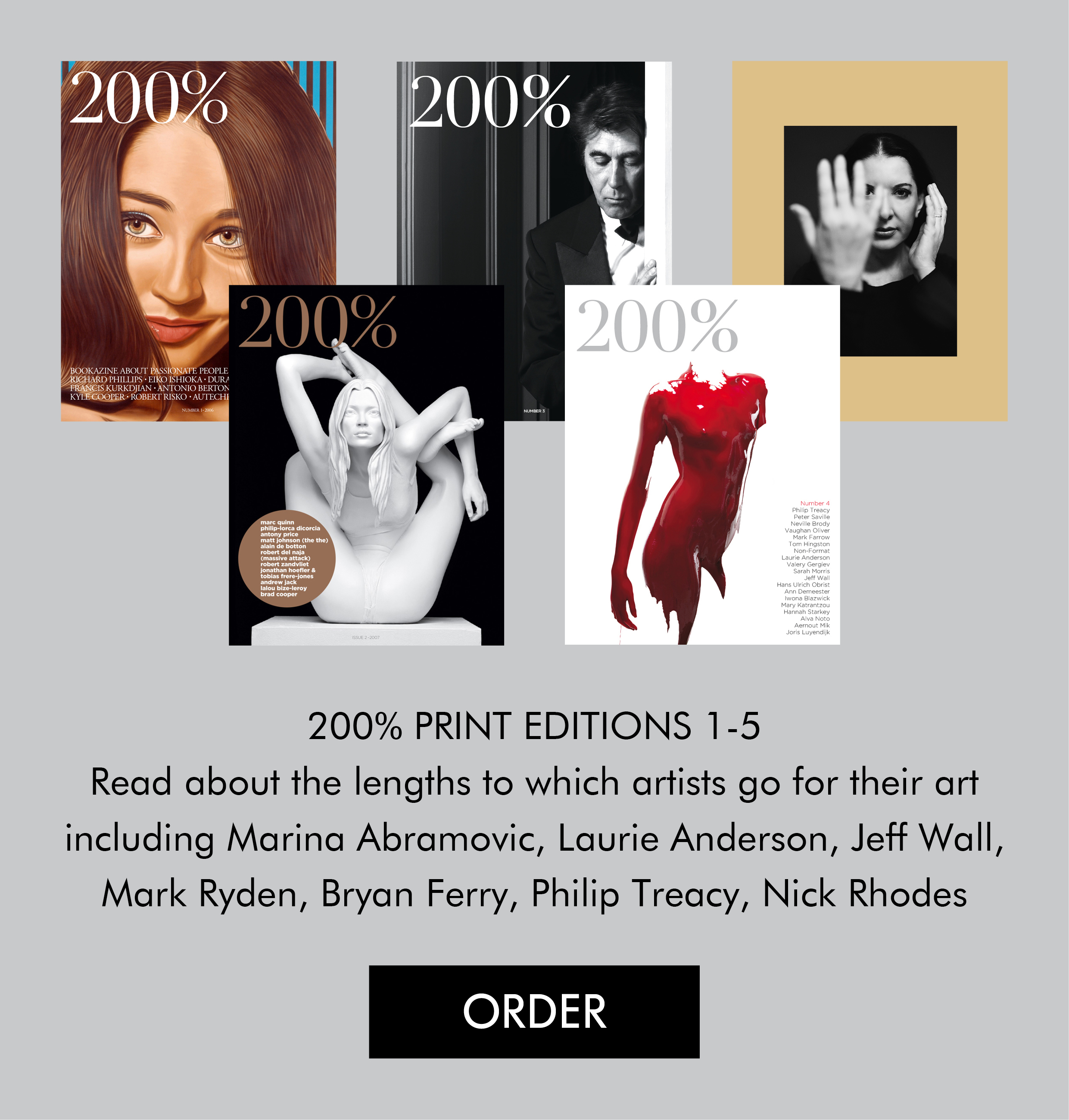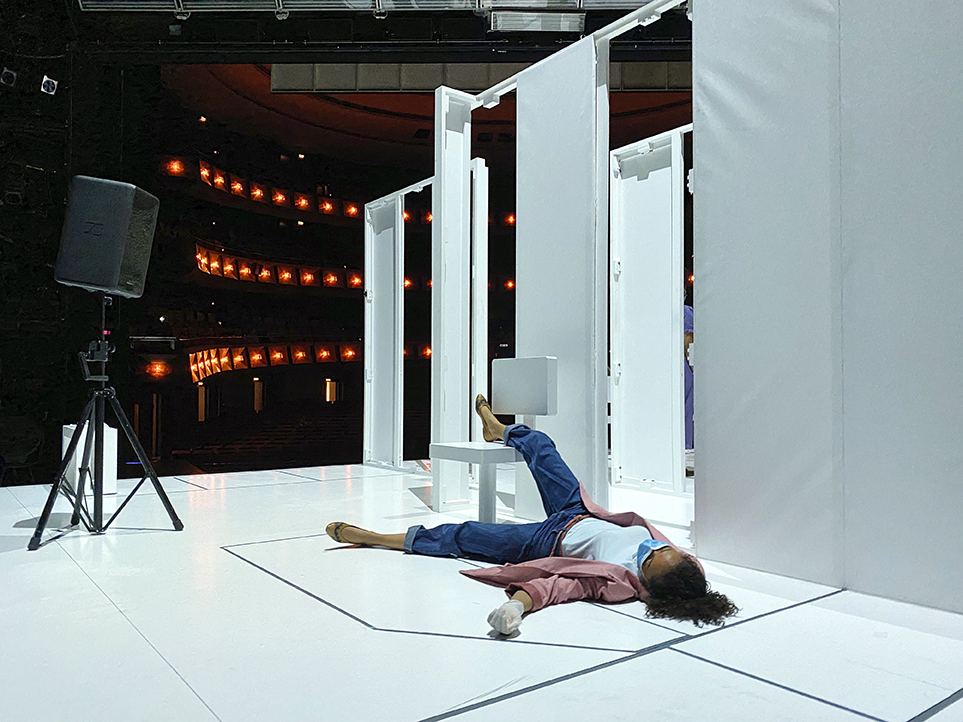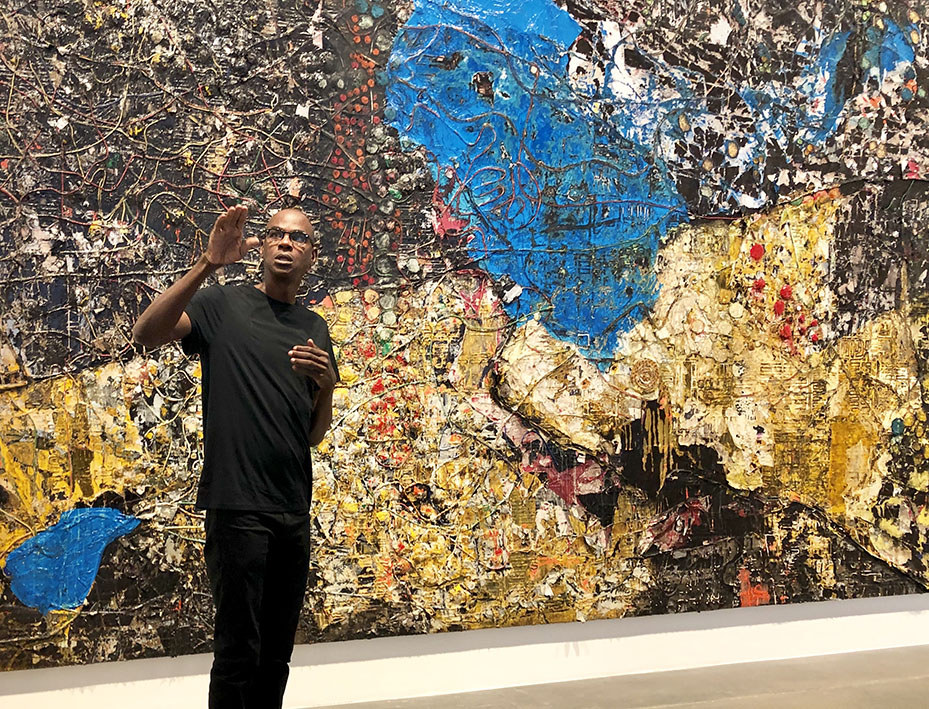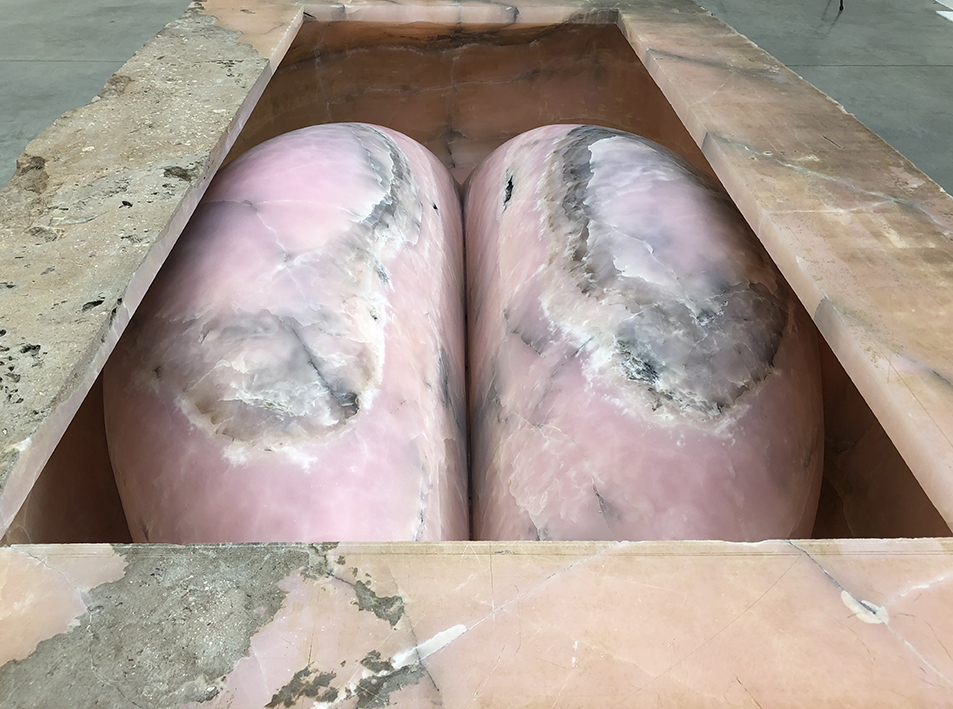 During the Summer Olympics, the Central Line, going straight through the heart of London, will be the tube line that will transport you to both frenetic and tranquil destinations. For the former, alight at Stratford, which is the stop for the Olympic Park; for the latter, alight at Fairlop, eight stops further east, for ‘Nothing Is Set In Stone’, an interactive stone and musical sculpture by composer and artist Mira Calix.
The monolithic installation of the South-African born artist is part of the London Festival 2012: ‘Secret: Hidden London’. The Mayor of London initiated a programme for exhibit during the Games to encourage the influx of visitors, who also have an interest in culture, to visit a series of cross-cultural events taking place in little-known spaces across London. Calix is the brain and driver of ‘Nothing Is Set In Stone’.She collaborated with many parties on the project, including geologists from the Natural History Museum. Overcraft, a studio founded by George Konstantinou and Alexandros Tsolakis, will design the standing stone sculpture located at Fairlop Waters, a nature reserve and country park in the London Borough of Redbridge.
With ‘Nothing Is Set In Stone’ Calix’s objective is “to make a physical experience of music, by pushing sound through a rock”, which sounds abstract and intriguing at the same time. It is the type of project that you can expect from Calix as she has built an impressive track record of experimental and innovative projects throughout her career.
Calix has released five albums on the pioneering electronic music label Warp, and collaborated with the video artist Quayola, for whom she scored ‘Strata #2’, a transfixing film of leaded church windows graphically shattering into pieces. For her composition ‘My Secret Heart’, an enthralling choral work sung by 80 singers from homeless centers, she won a British Composer Award. With United Visual Artists (UVA) she created ‘Chorus’, a mesmerizing kinetic installation wherein eight tall black pendulums swing back and forth, simultaneously emitting light and sound.
During the Summer Olympics, the Central Line, going straight through the heart of London, will be the tube line that will transport you to both frenetic and tranquil destinations. For the former, alight at Stratford, which is the stop for the Olympic Park; for the latter, alight at Fairlop, eight stops further east, for ‘Nothing Is Set In Stone’, an interactive stone and musical sculpture by composer and artist Mira Calix.
The monolithic installation of the South-African born artist is part of the London Festival 2012: ‘Secret: Hidden London’. The Mayor of London initiated a programme for exhibit during the Games to encourage the influx of visitors, who also have an interest in culture, to visit a series of cross-cultural events taking place in little-known spaces across London. Calix is the brain and driver of ‘Nothing Is Set In Stone’.She collaborated with many parties on the project, including geologists from the Natural History Museum. Overcraft, a studio founded by George Konstantinou and Alexandros Tsolakis, will design the standing stone sculpture located at Fairlop Waters, a nature reserve and country park in the London Borough of Redbridge.
With ‘Nothing Is Set In Stone’ Calix’s objective is “to make a physical experience of music, by pushing sound through a rock”, which sounds abstract and intriguing at the same time. It is the type of project that you can expect from Calix as she has built an impressive track record of experimental and innovative projects throughout her career.
Calix has released five albums on the pioneering electronic music label Warp, and collaborated with the video artist Quayola, for whom she scored ‘Strata #2’, a transfixing film of leaded church windows graphically shattering into pieces. For her composition ‘My Secret Heart’, an enthralling choral work sung by 80 singers from homeless centers, she won a British Composer Award. With United Visual Artists (UVA) she created ‘Chorus’, a mesmerizing kinetic installation wherein eight tall black pendulums swing back and forth, simultaneously emitting light and sound.
 During the summer Calix will also be involved in another London Festival 2012 project as she will write a new orchestral score for Hitchcock’s 1928 film ‘Champagne’. It is part of ‘The Genius of Hitchcock’, for which the British Film Institute has restored nine silent films from The Master of Suspense – something that can build on the revival of silent film recently inspired by the success of ‘The Artist’.
During the summer Calix will also be involved in another London Festival 2012 project as she will write a new orchestral score for Hitchcock’s 1928 film ‘Champagne’. It is part of ‘The Genius of Hitchcock’, for which the British Film Institute has restored nine silent films from The Master of Suspense – something that can build on the revival of silent film recently inspired by the success of ‘The Artist’.
 A stone and the Olympics. Is there a specific relationship between them? I frame it as a multiple choice question to Calix.
A stone and the Olympics. Is there a specific relationship between them? I frame it as a multiple choice question to Calix.
 200%: How did the idea originate to make a musical composition set in a standing stone sculpture?
MC: It’s so hard to pin point. It was a combination of thoughts and ideas about place, time, and the only constant being change. I guess, the germination was that there were linked, but disparate, thoughts, whose connections are very clear to me.
200%: Can you be a bit more specific?
MC: I’m aware that’s the vaguest of replies, but it’s so often the way with a piece of work: that you’re not quite sure how you got there; it can be a slow process, then very suddenly it just is what it is. There is no deviation and there are no real words to explain. That’s why I make the piece, I don’t have the vocabulary to articulate my thoughts.
200%: Okay, then why a stone?
MC: Stone is the antithesis – so solid, so tangible – of music, so apparently light and ephemeral. I really love stones, and I’m one of those people who collect stones wherever I go. I put them in my handbag or pocket. I live near the beach and when I go there I always leave with a pebble memento – naughty I know. I’ve given a lot of thought to how time slows down for the pebble I keep in my home, but speeds up for the ones left behind. They are eroded more quickly. Really these [the pebbles] were the germination for the piece – this paradox of time speeding up and slowing down. My fascination with stones is an ongoing one. Previously, I’ve used pebbles ‘sonically’, on my album ‘Skimskitta’. The wonderful aspect about working on this piece, is that it led to meeting other people who have an interest in stones.
200%: Do you have a spiritual connection with stones?
MC: I’ve never really questioned it. I’m just drawn to them. I notice them.
200%: Can you describe the stone sculpture?
MC: The sculpture is made up of approximately five tons of Gneiss stones. They vary in size, effectively large to small pebbles. The height is just under four meters, and the diameter just under two meters.
200%: What made you choose Gneiss stone and not pebble stone?
MC: It was an instinctive and aesthetic choice. I went to the stone suppliers yard in Essex and was confronted by hundreds of stones. The Gneiss stone caught my eye, and I fell in love with it at first sight. Fortunately they were suitable for the build, so the decision to work with this particular stone was very simple.
200%: Boris Johnson has commented on your project: “With this musical sculpture Mira Calix has managed to wrest not blood, but music from a stone”. Excuse me for editing the words of the Mayor’s quote, but what makes you interested to ‘wrestle’ music from a stone?
MC: It’s this thought of the light leaking – and I’m referring to weight – out of the heavy, the solid. The sound seeps out of its stone envelope.
200%: How are you going to push sound through the rock?
MC: With some very beautiful speakers and some great engineering, for neither of which I can take the credit.
200%: To whom can credit be given?
MC: I have a great team, which I pulled together: people whom I know, who are not only talented, and on whom I can count. I have worked with them all before and they are all wonderful – it’s a pleasure to work with them. The design team includes Overcraft, a company of architects/engineers; the sound designer, David Sheppard from Soundintermedia, and the fabricator, Broa Sams. The producer is Keri Elmsly.
200%: What would you like the visitors to take from your sculpture?
MC: That they’ve seen a song; that nothing is set in stone.
200%: Could you clarify what you mean by ‘seen a song’?
MC: Probably not but I’ll try. I view this work as a physical manifestation of a piece of music. I’m hoping people take away something of this idea once they have experienced it. The only place it really exists is at the core of the stones, or in the audience’s head. I hope it’s something of which they can enjoy the physicality.
Interview written and conducted by Thierry Somers
Pictures: visualization of the sculpture (above), Mira Calix visits Broa Sams workshop in South London to review the structural scale model and discuss build phase.
Secrets: Hidden London: Nothing Is Set In Stone
21 Jun 2012 – 9 Sep 2012
www.nothingissetinstone.info
200%: How did the idea originate to make a musical composition set in a standing stone sculpture?
MC: It’s so hard to pin point. It was a combination of thoughts and ideas about place, time, and the only constant being change. I guess, the germination was that there were linked, but disparate, thoughts, whose connections are very clear to me.
200%: Can you be a bit more specific?
MC: I’m aware that’s the vaguest of replies, but it’s so often the way with a piece of work: that you’re not quite sure how you got there; it can be a slow process, then very suddenly it just is what it is. There is no deviation and there are no real words to explain. That’s why I make the piece, I don’t have the vocabulary to articulate my thoughts.
200%: Okay, then why a stone?
MC: Stone is the antithesis – so solid, so tangible – of music, so apparently light and ephemeral. I really love stones, and I’m one of those people who collect stones wherever I go. I put them in my handbag or pocket. I live near the beach and when I go there I always leave with a pebble memento – naughty I know. I’ve given a lot of thought to how time slows down for the pebble I keep in my home, but speeds up for the ones left behind. They are eroded more quickly. Really these [the pebbles] were the germination for the piece – this paradox of time speeding up and slowing down. My fascination with stones is an ongoing one. Previously, I’ve used pebbles ‘sonically’, on my album ‘Skimskitta’. The wonderful aspect about working on this piece, is that it led to meeting other people who have an interest in stones.
200%: Do you have a spiritual connection with stones?
MC: I’ve never really questioned it. I’m just drawn to them. I notice them.
200%: Can you describe the stone sculpture?
MC: The sculpture is made up of approximately five tons of Gneiss stones. They vary in size, effectively large to small pebbles. The height is just under four meters, and the diameter just under two meters.
200%: What made you choose Gneiss stone and not pebble stone?
MC: It was an instinctive and aesthetic choice. I went to the stone suppliers yard in Essex and was confronted by hundreds of stones. The Gneiss stone caught my eye, and I fell in love with it at first sight. Fortunately they were suitable for the build, so the decision to work with this particular stone was very simple.
200%: Boris Johnson has commented on your project: “With this musical sculpture Mira Calix has managed to wrest not blood, but music from a stone”. Excuse me for editing the words of the Mayor’s quote, but what makes you interested to ‘wrestle’ music from a stone?
MC: It’s this thought of the light leaking – and I’m referring to weight – out of the heavy, the solid. The sound seeps out of its stone envelope.
200%: How are you going to push sound through the rock?
MC: With some very beautiful speakers and some great engineering, for neither of which I can take the credit.
200%: To whom can credit be given?
MC: I have a great team, which I pulled together: people whom I know, who are not only talented, and on whom I can count. I have worked with them all before and they are all wonderful – it’s a pleasure to work with them. The design team includes Overcraft, a company of architects/engineers; the sound designer, David Sheppard from Soundintermedia, and the fabricator, Broa Sams. The producer is Keri Elmsly.
200%: What would you like the visitors to take from your sculpture?
MC: That they’ve seen a song; that nothing is set in stone.
200%: Could you clarify what you mean by ‘seen a song’?
MC: Probably not but I’ll try. I view this work as a physical manifestation of a piece of music. I’m hoping people take away something of this idea once they have experienced it. The only place it really exists is at the core of the stones, or in the audience’s head. I hope it’s something of which they can enjoy the physicality.
Interview written and conducted by Thierry Somers
Pictures: visualization of the sculpture (above), Mira Calix visits Broa Sams workshop in South London to review the structural scale model and discuss build phase.
Secrets: Hidden London: Nothing Is Set In Stone
21 Jun 2012 – 9 Sep 2012
www.nothingissetinstone.info










